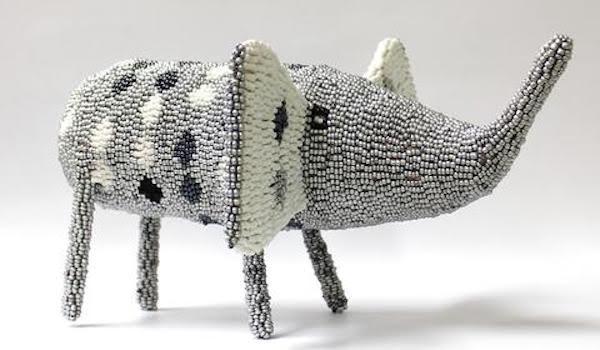
Beaded Beasts

Beads have long been a reliable accessory in African fashion, adding colour and texture to the continent’s already vibrant palette. But what you might not know is that beads weren’t always used merely for decoration. It’s said that in ancient times beads were once used as currency for the exchange of goods and services, and even as a kind of ID card, as wearing them often indicated which family or tribe a person belonged to.

The art of beading in Africa goes back as far as 75,000 years, and now a new co-operative of women from the Khayelitsha township in South Africa are breathing new life into the craft. Their striking handmade and beaded sculptures have struck a cord not just with their local community, but with the international art world as well — recently forming a sell-out exhibition at none other than Sotheby’s Auction House.

The first known examples of decorative beads were found just off the South African coast in 2004. Unlike the robust materials that beads are made from today such as glass or plastic, this find revealed that much of Africa’s ancient beading was done with ostrich egg shells — a material that must have called for a remarkably delicate touch. It wasn’t until the 14th century when glass became a much more popular material for beads that their use as an international currency became more widespread, giving a great boost to the African economy during the 1500s.

Celebrating the life and vibrancy of African crafts and identity, this new collection of playful homeware objects are now being held in the Smithsonian Design Museum, or can be found online at the ever beautiful Shop Floor Project.
